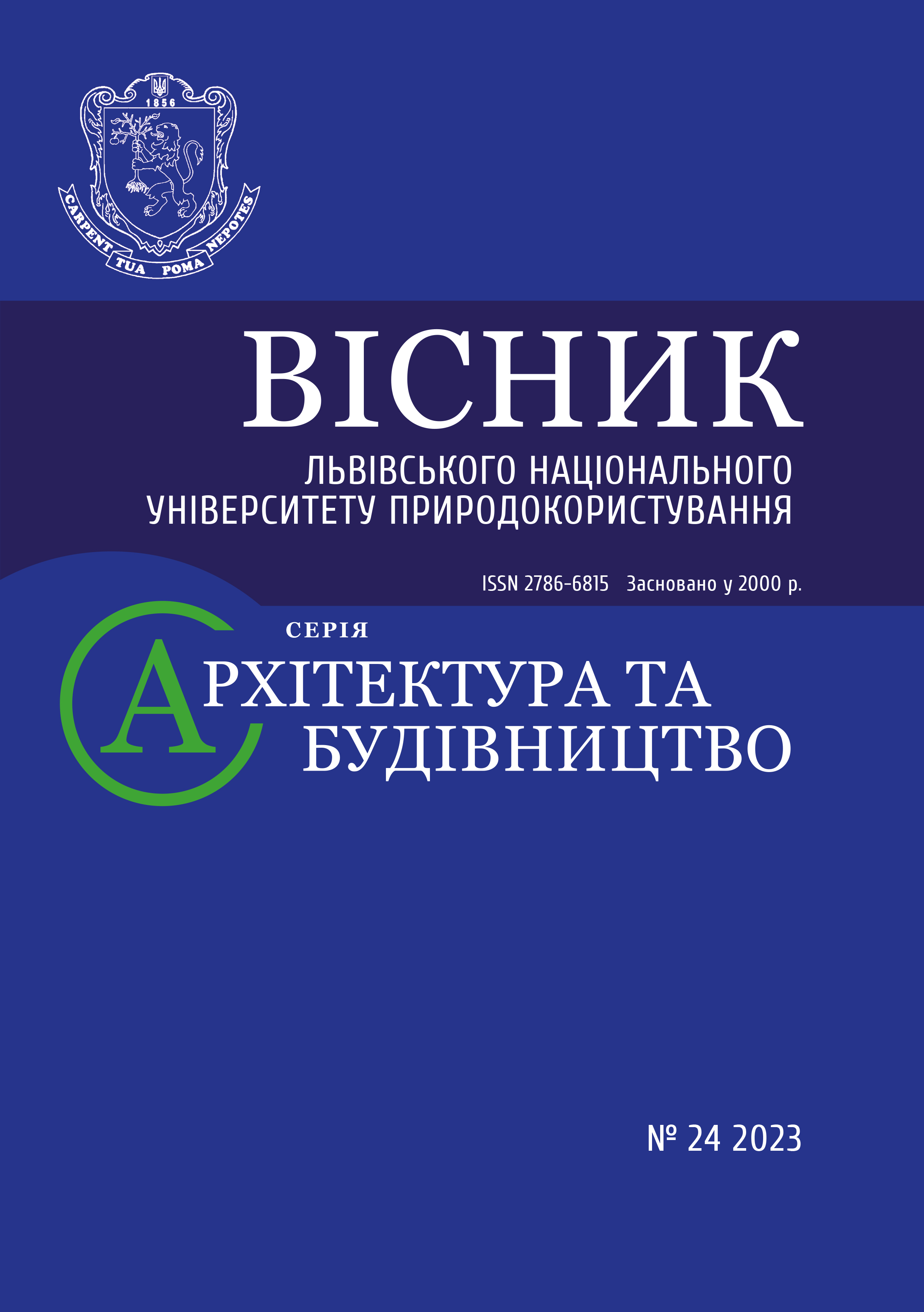EUROPEAN EXPERIENCE IN FOREST CADASTRE MANAGEMENT: PROSPECTS FOR UKRAINE
DOI:
https://doi.org/10.31734/architecture2023.24.157Keywords:
forestry, forest lands, land for forestry purposes, forestry fund, forestry corporationsAbstract
The proposed study aims to analyze the management of European forests through rational forest cadastre management. In the current conditions of increasing anthropogenic pressure on land and forest resources, low forest cover growth, decreasing land productivity, uncontrolled mass deforestation, and development of forest land for construction, it has become crucial to ensure the rational use and protection of forest land. Private ownership of forestry land is prevalent in European Union (UA) member-states, resulting in a positive impact on the environmental and economic situation. Actually, private entities, communities, farms, and forestry corporations own the majority of European forests.
It is studied that the reasons of the area increase in private forest lands primarily include self-afforestation of inefficient agricultural lands, particularly in mountainous areas, where it is a problem to conduct farming. It is determined that the volume of forestry products has increased to UAH 13774.6 million, although this indicator is the lowest in Ukraine as compared to other EU member states. According to estimates, Ukraine takes the last position by the correlation of the volume of forest industry production and forest area. Ukraine harvests 157.54 m3 of wood from 1 hectare of forest area suitable for commercial production, which is half of the EU member states' ratio. Forestry is the primary type of land use in EU member states with high forest cover and low agricultural land use. The analysis of the data on distribution of agricultural lands by the form of ownership proves the fact that in the countries of the European Union having large area of forests most of the area in private property.
The article highlights European expertise of forest cadastre and describes the leading practice in Finland, Sweden, Slovenia, Estonia, Latvia, Slovak Republic and Austria. These countries have large area of forests and good experience of managing them that can be applied in Ukraine.
References
A Blockchain Implementation Prototype for the Electronic Open Source Traceability of Wood along the Whole Supply Chain / Figorilli S. et al. Sensors. 2018. No 18. URL: https://www.researchgate.net/publication/327706251_A_Blockchain_Implementation_Prototype_for_the_Electronic_Open_Source_Traceability_of_Wood_along_the_Whole_Supply_Chain (Accessed August 1, 2023).
Benra F., Nahuelhual L. A trilogy of inequalities: Land ownership, forest cover and ecosystem services distribution. Land Use Policy. 2019. Р. 247–257. doi: 10.1016/j.landusepol.2 018.12.020.
Chhetri K. B. B., Asante P., Yoshimoto A. Forest Dependence and Inequality: An Empirical Study from Community Forests in Kaski. Nepal. 2016. No 15. P. 33–43.
Coomes O. T., Takasaki Y., Rhemtulla J. M. Forests as landscapes of social inequality: tropical forest cover and land distribution among shifting cultivators. Ecology and Society. 2016. No 21 (3). doi: 10.5751/ES-08684-210320.
Eurostat Statistics Explained. LUCAS – Land use and land cover survey. URL: https://ec.europa.eu/eurostat/statistics-explained/index.php?title=LUCAS_-2020_Land_use_and_land_cover_survey#Defining_land_use.2C_land_cover_and_landscape (Accessed August 1, 2023).
Eurostat. Forestry. Data. Database. URL: https://ec.europa.eu/eurostat/web/forestry/data/database (Accessed August 1, 2023).
Eurostat. Forests, forestry and logging. URL: https://ec.europa.eu/eurostat/statistics-explained/index.php/Forests,_forestry_and_logging#Forests_and_other_wooded_l (Accessed August 1, 2023).
Forest Code of Ukraine. URL: https://zakon.rada.gov.ua/laws/show/3852-12 (Accessed August 1, 2023).
Haida Yu., Kuzyk I. Forest industry complex of Ukraine. Efficient economy. 2021. No 3. URL: http://www.economy.nayka.com.ua/?op=1&z=8735 (Accessed August 1, 2023).
Heider C., Connelly A. Why Land Administration Matters for Development, 2019. URL: http://ieg.worldbankgroup.org/blog/why-land-administrationmatters-development (Accessed August 1, 2023).
On Amendments to the Constitution of Ukraine (Regarding the State's Strategic Course for Ukraine's Full Membership in the European Union and the North Atlantic Treaty Organization): The Law of Ukraine dated February 7, 2019, No 2680-VIII. URL: https://zakon.rada.gov.ua/laws/show/2680-19#n9 (Accessed August 1, 2023).
Openko I. A. Theoretical and methodological foundations of the formation of the economic mechanism of rational use and protection of forestry land in Ukraine. Agroworld. 2020. No 3. P. 50–58.
Recovery of losses for inappropriate use of land / E. Kryvoviaz et al. Land Reclamation, Earth Observation & Surveying, Environmental Engineering. 2020. No IX. P. 175–182.
Rohach S. M. Foreign experience in the regulation of nature management. Scientific Bulletin of the Uzhhorod National University: International Economic Relations and the World Economy. 2019. No 26 (2). P. 54–59.
The World Bank. Forest area (% of land area). European Union. URL: https://data.worldbank.org/indicator/AG.LND.FRST.ZS?end=2019&locations=EU&start=1990&view=chart (Accessed August 1, 2023).
Yarova B. M., Openko I. A. Forests of Europe and Ukraine: dynamics of changes, problems and ways to improve management. The impact of climate change on the spatial development of the Earth's territories: consequences and solutions: materials of the International science and practice conference (Kherson, June 13–14, 2019). Kherson, 2019. P. 25–26.
Zinkevich O. V. Application of a systemic approach to the study of the essence of state regulation of forestry. Problems of the economy. 2020. No 1. P. 68–75.


